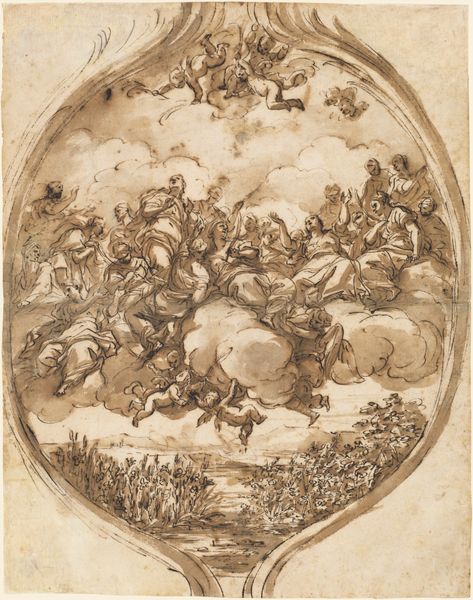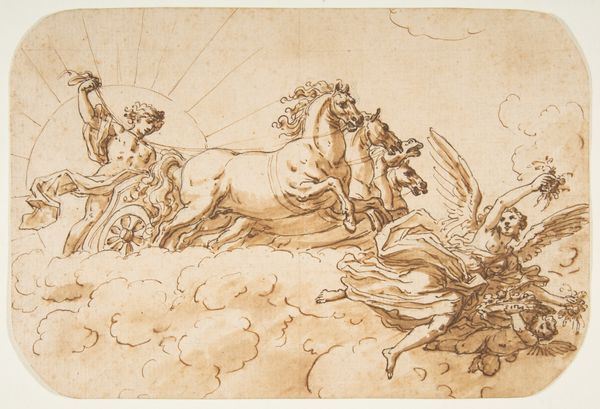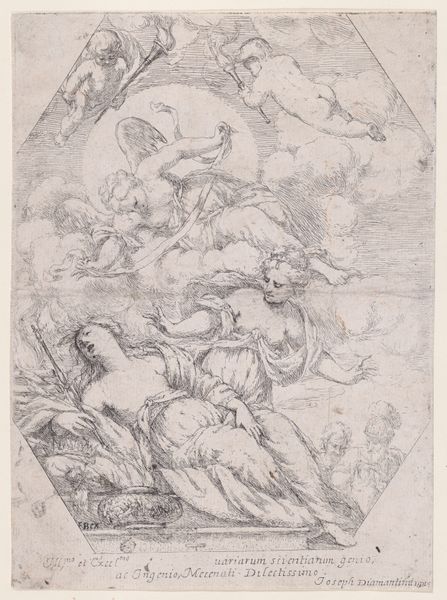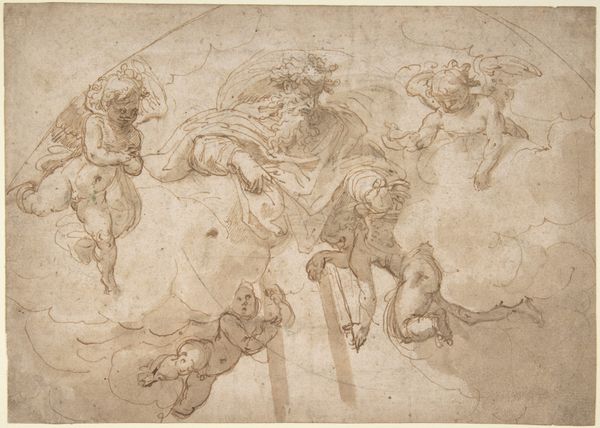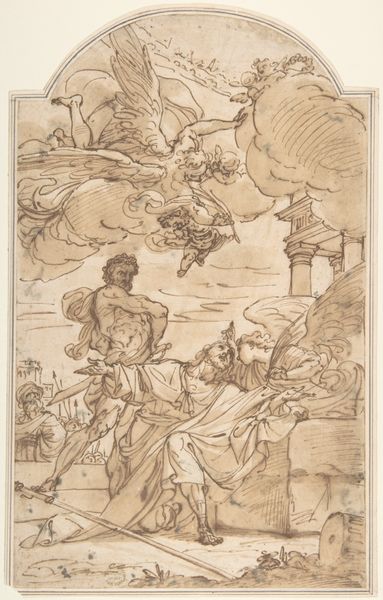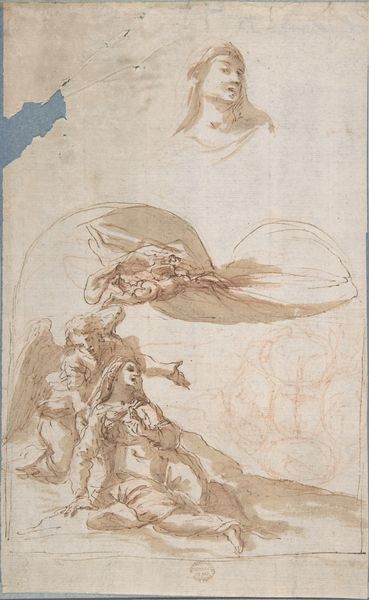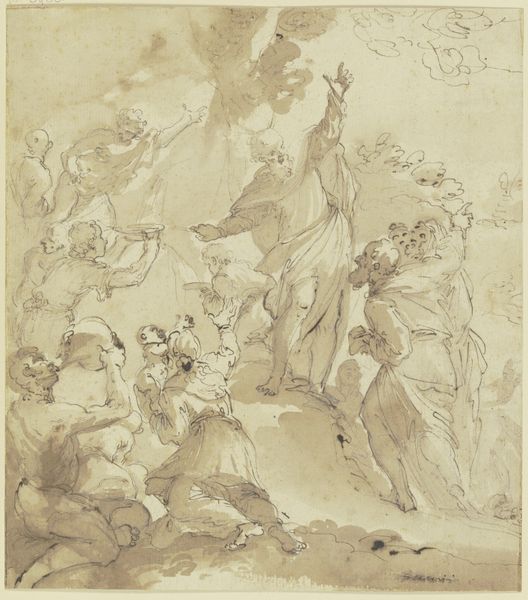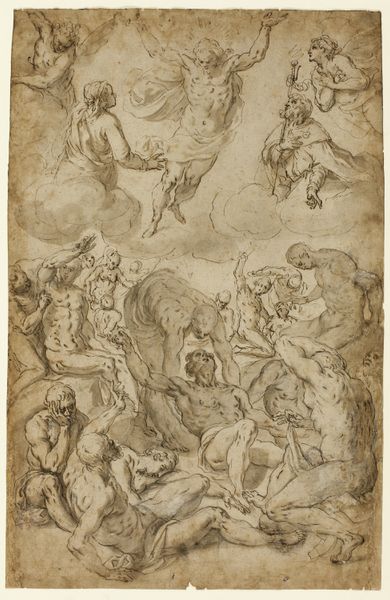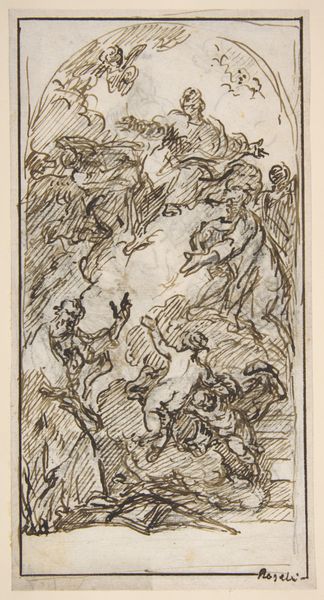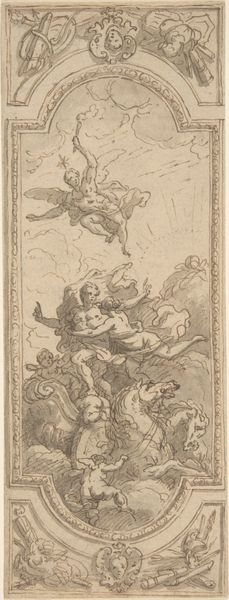
Dimensions: Overall: 26.5 x 22.4 cm (10 7/16 x 8 13/16 in.) support: 35 x 30.9 cm (13 3/4 x 12 3/16 in.)
Copyright: National Gallery of Art: CC0 1.0
Editor: So, this is Ubaldo Gandolfi's "The Apotheosis of San Vitale," created in 1781 using ink. It's quite striking, almost like a celestial whirlwind. It's making me wonder, how do we understand the value placed on drawings during this time, especially concerning religious figures like this? Curator: Considering Gandolfi’s materials – ink on paper – let's consider the economy of drawing at the time. How accessible were these materials, and what did that accessibility say about the consumption of religious art? Was it more a private devotional object than, say, a grand altarpiece meant for a wide congregation? The rapid, fluid strokes of ink suggest a swift execution – almost mass production, which questions the sanctity we usually associate with religious art. Editor: So, are you saying the accessibility of the medium and style shifts the meaning from purely spiritual to something more...about its creation and distribution? Curator: Exactly! The materials themselves suggest a democratization of religious imagery. Who was the intended audience? Was this piece meant for wealthy patrons or perhaps a broader segment of the population? What kind of labor went into similar pieces during this era and where? We can better interpret Gandolfi’s work through the lens of labor and access to these materials. Editor: I see what you mean. It shifts the focus from just the divine subject matter to the more tangible process of creation and consumption in that period. Thanks for making me consider these things. Curator: My pleasure. Paying close attention to the physical circumstances behind its production allows us a richer reading of its historical context.
Comments
No comments
Be the first to comment and join the conversation on the ultimate creative platform.
